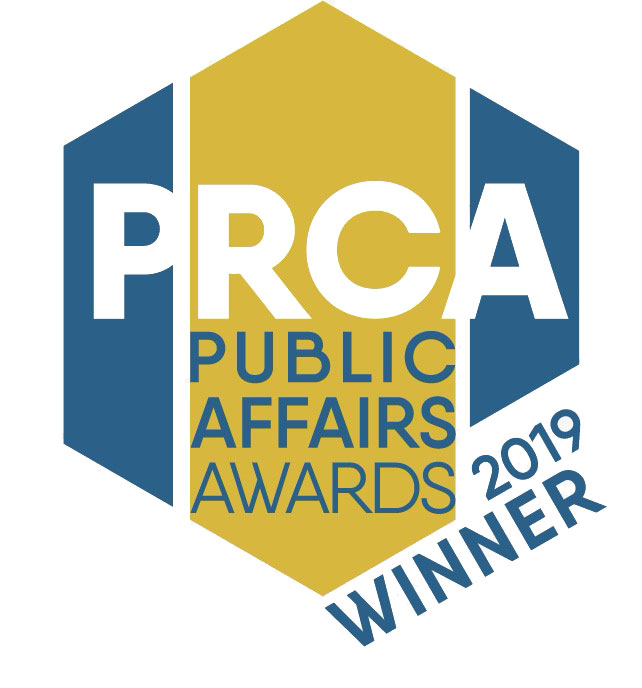Integrated Rail Plan for the North and Midlands
19/11/2021Overview
The UK Government regards the Integrated Rail Plan (IRP) for the Midlands and North as an integral part of its commitment to levelling up the country and ‘Building Back Better’ from the COVID-19 pandemic. IRP presents a programme of investment through to the 2040s aiming to drive economic growth in the Midlands and the North of England.
Below, Atticus Communications has summarised the key highlights of the IRP. You can read the full Integrated Rail Plan for the North and Midlands here.
What is the Integrated Rail Plan?
· The IRP sets out a blueprint for the development of train services across the Midlands and North and towards Scotland and London
· The IRP sets out how the Government will take forward and bring together the Phase 2b of HS2, Northern Powerhouse Rail (NPR) and the Midlands Rail Hub (MRH), and other major Network Rail schemes over the period to 2050
What the Integrated Rail Plan is seeking to achieve
The Integrated Rail Plan for the North and Midlands has several strategic objectives, listed below:
· Improving transport for users by enhancing capacity
· Reducing environmental impact by supporting decarbonisation of the rail network
· Growing and levelling up the economy
· Ensuring value for the taxpayer through efficient delivery of rail infrastructure
Core projects of the IRP:
· The UK Government will build High Speed 2 (HS2) from Crewe to Manchester
· Construction of HS2 from the West Midlands to East Midlands Parkway (HS2 East)
· A new high-speed rail to be built between Warrington, Manchester and, Yorkshire
· Electrification and upgrading of the Transpennine Main Line between Manchester, Leeds, and York
· Electrification and upgrade of the Midland Main Line between London St Pancras, the East Midlands, and Sheffield
· Upgrade and speeding up of the East Coast Main Line (ECML)
· Starting work on the new West Yorkshire Mass Transit System
· Introduce London-style contactless ticketing across the commuter networks of the Midlands and North
· Improve long-distance connections with HS2 and progress work on options to complete the Midlands Rail Hub (MRH)
· Invest in local transport at Toton and the East Midlands
· Planned upgrades on the Hope Valley Line to be completed
Proposed Portfolio for the North and Midlands
The IRP notes that the UK Government has built upon the National Infrastructure Commission’s (NIC) advice in reaching decisions on the IRP. Infrastructure interventions have been compared considering an assessment of:
· Strategic and economic rationale: What are the objectives for each intervention, and which rail markets does it aim to serve
· Current proposed/preferred options: How these proposals meet required outputs and how they perform in terms of strategic, financial, economic, and deliverability considerations
· Possible alternative: What other options could be affordable, deliver passenger benefits and offer value for money while being phased sensibly
HS2 Phase 2b Western Leg
· With Royal Assent for the legislation for Phase 2a (to Crewe) received earlier in 2021, the decision for the IRP is whether to complete the Western Leg to Manchester Piccadilly as planned
HS2 Western Leg: What the UK Government proposes in the IRP core pipeline
The below proposals are subject to confirmation in response to the October 2020 Design Refinement Consultation:
· To deliver its commitment to complete the high-speed line into Manchester, the Crewe to Manchester section of the Western Leg of HS2 Phase 2b should proceed
· The Government holds the view that Manchester Piccadilly is the right location for an HS2 station for Manchester
· The Government considers that the design of the Western Leg should include Crewe Northern Connection, so trains can call at Crewe and re-join the HS2 line
HS2 Phase 2b Eastern Leg
· With cost increases, concerns about intermediate markets, development of plans for other schemes, and analysis indicating a longer delivery timeframe since the HS2 Y-network was confirmed in summer 2017, the Government has considered if the UK could obtain similar benefits in a more affordable way
HS2 East Core Network:
· A new high-speed line from the West Midlands to East Midlands Parkway (HS2 East) is to be developed by HS2 Ltd
· Completing electrification of the Midland Main Line to Leicester, Nottingham, and Sheffield via Derby
Future possibilities for HS2 East Core Network:
· Allocation of £100m to start work on the West Yorkshire Mass Transit System
· Accelerating plans for an East Midlands Delivery vehicle
Northern Powerhouse Rail
The Government proposes the following for Northern Powerhouse rail in the IRP core pipeline:
· To build Northern Powerhouse Rail (NPR) in line with the 2019 option 1 developed by Transport for the North. This will see:
o 40 miles of newbuild high-speed line between Warrington, Manchester, and Yorkshire
o Upgraded and electrified conventional line for the rest of the route
o Electrification of the Transpennine Route between Manchester and Leeds, and digital signalling throughout the route
o Electrification of Leeds-York with some sections of four-tracking
o Upgrades and electrification of the Leeds-Bradford section of the Calder Valley Line
o Reinstatement of Warrington Bank Quay low level station; upgrading and electrifying existing lines between Warrington and Liverpool; and enhancing Liverpool Lime Street station
Midlands Rail Hub
The IRP notes that the high-speed line between the West and East Midlands will give more significant connectivity benefits than previous plans, with journey times between Birmingham and Nottingham reduced to under half an hour.
Freight
· Increasing the number of goods moved on UK railways has economic benefits, such as reducing congestion on roads, improving connectivity, and levelling up
· By increasing the capacity of the railways for freight, the IRP will help accelerate a modal shift of goods from road to rail, a crucial part of the UK Government’s decarbonisation strategy
Phasing
The IRP terms of reference set out that the Plan would outline a recommended way forward on the phasing and sequence of delivery for HS2 Phase 2b and other major rail programmes in the North and Midlands. Below is a timeframe of what passengers may see at various points. The Control Periods mentioned below relate to Network Rail’s Control periods, which are 5-year timeframes in which Network rail works for financial planning purposes.
· By around 2030 (at the end of Network Rail’s Control Periods 7 (2024-2029) and 8 (2030-34), passengers could see:
o Electrification of the remaining sections of the Midland Main Line
o Introduction of NPR services on the Transpennine Route from Leeds and York to Manchester
o Benefits from early upgrades to the East Coast Main Line
o Electrification and improvements to the Bradford to Leeds line
o Completion of existing work on Sheffield to Manchester
· By around 2035, passengers could see:
o Completion of HS2 Phase One and 2a (London to West Midlands and Crewe)
o Completion of upgrades on the East Coast Main Line
· By the early-mid 2040s, passengers could see:
o Completion of the high-speed line from Crewe to Manchester (Phase 2b Western Leg)
o The new high-speed line connecting the West Midlands to the East Midlands
o Completing the new high-speed line between Manchester Piccadilly and the Transpennine route to Huddersfield
o Connecting Liverpool to the core NPR network with Manchester to Liverpool NPR
o Further interventions East of Leeds to York to boost capacity from Manchester to Leeds and Newcastle
· By 2050, the Government expects the benefits of HS2, NPR, and MRH to have been realised
We’ve cultivated an environment that harbours independence. Whether they are early birds who go to yoga and then smash their news updates before 8.30am, or they simply hate travelling on the tube in rush hour, we trust and respect our team’s skills and conscientiousness. As long as core responsibilities are covered, our team is free to work flexibly.
We’re proud to be a living wage employer. We believe that no one should have to choose between financial stability and doing a job they love, so we pay a wage that allows our team to save for a rainy day and guarantees a good quality of life.
Sign up to receive the Atticus Agenda
Sign Up Here



